VG&M Interview: Conserving our Collection
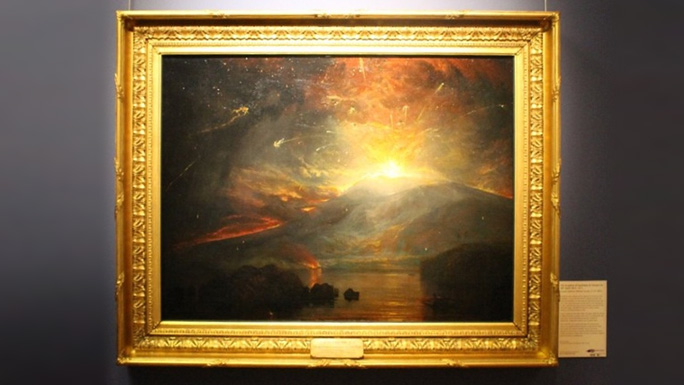
We have had some conservation carried out on one of our most popular works of art ‘The Eruption of the Soufrière Mountains in the Island of St Vincent, 30 April 1812’ by J.M.W Turner, 1815.
Over time the condition of works can change and conservation may be required, sometimes to address old restoration.
Germaine Denn, a professional conservator, restored the original frame and we asked her to come in and tell us about her work.
Can you tell me a little bit about what you do?
I conserve and restore objects and interiors that have been gold leafed.
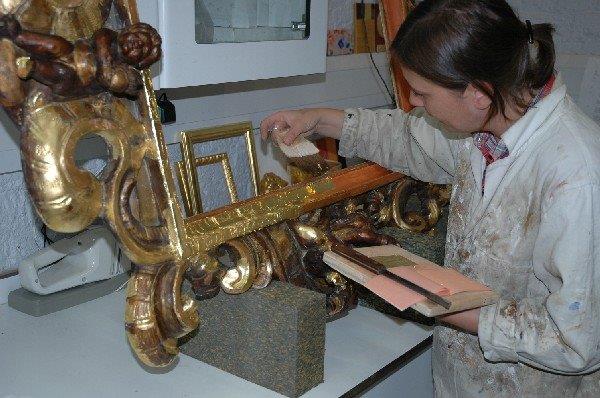
What are the factors that lead to artwork requiring conservation?
The ever changing environment an object is displayed within is generally the reason why an object of art requires conservation.
How long have you been a conservator?
I have worked in conservation for sixteen years.
What influenced you to take this career path?
I previously worked in textile restoration but decided that I wanted to change direction so I decided to go to university and study a degree in furniture restoration and conservation.
Where did you study/train and how long did it take?
I trained at the School of Furniture which was affiliated with the University of Manchester. It was a three year full time course. Although I completed my training many years ago it is important to build on it and continue learning new skills.
Where do you work?
I work independently in a studio space at the Conservation Centre in the centre of town. I get the opportunity to work alongside other conservators from different disciplines.
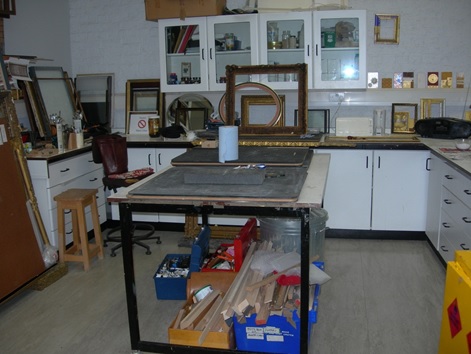
Can you tell me what conservation has been undertaken on our Turner frame?
The frame had suffered damage over the years through general wear and tear where the gilding had become worn. There was evidence of previous restoration to the outer edges and the gilt surface. Removing the carved leaf decoration enabled me to clean away the surface that resembled snakeskin, seen in the picture below.

There are a number of processes you have to follow before applying gold: gesso fills the grain of the timber and creates a flat and even surface. The top moulding which is the highest point of the frame had lost most of its gesso ground so this was the first thing that needed to be addressed although the application was only locale to damage and loss. Once the entire surface was flat and even a coloured clay could be applied. Gold leaf was laid and then toned to control light reflection and remove the glare of new gold.
Conserving as much of the original was important to this project. The carving on the bottom rail required re-gilding but the other three rails where in a good condition showing original gold. This original gilding was a guide to the tone and colour I wanted to achieve.
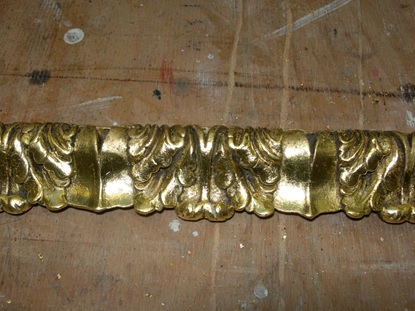
Were there any difficulties or challenges with this project?
The challenge was towards the end of the project because you are laying brand new gold leaf onto a surface which is going to look very bright. You need to take into consideration the painting, surroundings and the environment the frame is to hang so this always determines the final tone of the gilding.
You use reversible materials such as watercolour to tone the gold down so that in the future it can be changed or removed without damaging the surface.
How long did the project take to complete?
The project took two months to complete.
Have you worked on any other parts of the VG&M collection?
I’ve worked on some of the smaller Turner watercolour frames and lots of other frames for portraits.
Do you have a favourite piece of artwork from our collection?
I think the gilded icons down the main corridor are my favourites.

What has been the most challenging conservation project you have undertaken?
About 18 months ago I restored a frame that was painted blue with gold in between but most of the blue paint was lifting. Conserving the existing blue paint was difficult but colouring matching missing areas of paint to the exact shade and texture was extremely challenging and at times frustrating.
What has been the most unusual or exciting project you have worked on?
Over the years I have had the privilege of working in many beautiful buildings conserving both interiors and objects. It’s hard to pinpoint the most exciting or unusual.
VG&M Art Curator Moira Lindsay is impressed with the conservation work that has been carried out on the Turner Frame and stated
We want to present the painting looking its best. If a painting is framed well it should not be something that you notice but should subtly enhance the painting. I don’t think we acknowledge enough the importance of a good frame, and how crucial it is to presenting a work properly.
While the frame was being conserved by Germaine, there was also some minor conservation treatment to the painting that improved the appearance of small areas of older restoration. This included consolidation of a slightly raised edge at a crack in the fill of old damage at the centre to the left of the volcano, filling and retouching tiny paint losses to the impasto paint of the lava by the water, and addressing some patchy matt varnish.

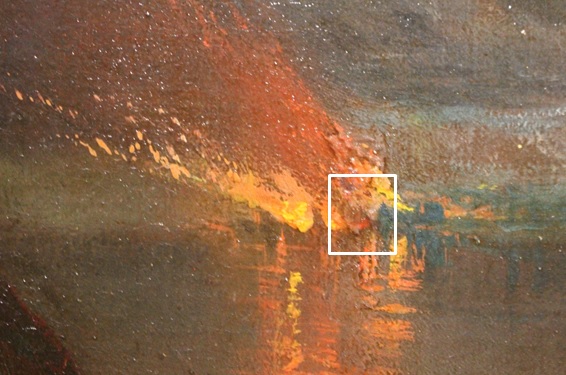
This work is part of the University of Liverpool’s Art & Heritage Collections and is on display in gallery 3 until August 2015. It will be on loan to the exhibition 'Danger and Beauty. William Turner and the tradition of the Sublime' (5 September 2015 to 3 January 2016) at Rijksmuseum Twenthe in Enschede, the Netherlands and will return to the VG&M early in 2016.